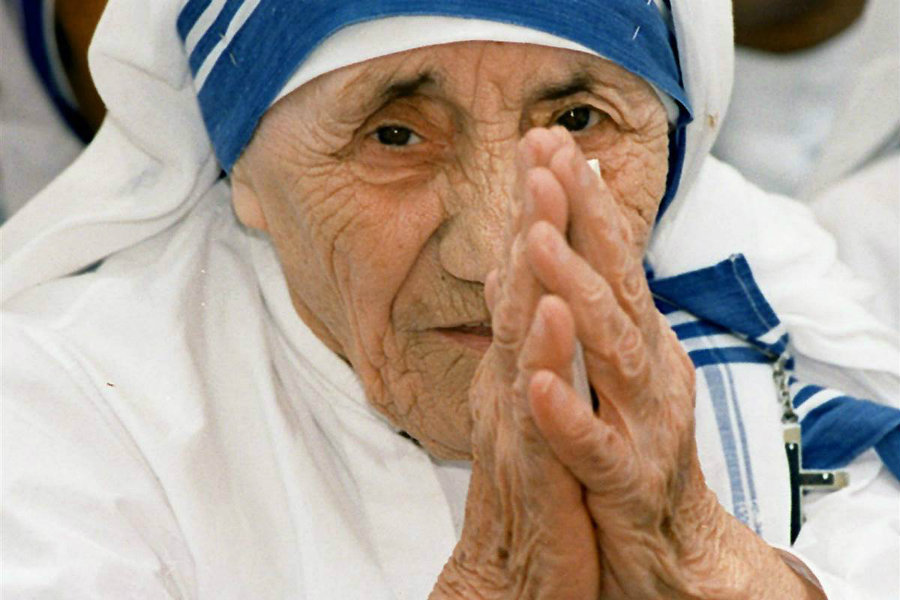Vatican City – After years of campaigns in her favor, Mother Teresa of Calcutta has finally been given the Catholic Church’s highest honor, as she was declared Saint in a canonization Mass held by Pope Francis on Sunday. The canonization was overseen by 120,000 attendants, who filled St. Peter’s Square. Surprisingly, this was less than half the number of people who accompanied Pope John Paul II at his beatification in October 2003.
Nonetheless, this event will be remembered as one of the highlights of Pope Francis’ papacy and the defining moment of his Holy Year of Mercy. So far, Pope Francis has focused in society’s outcast and most marginal, such as refugees, prostitutes, prisoners and homeless. In this sense, Mother Teresa’s sainthood will also reflect his papal objectives, something that has earned him criticism and praise.

“Let us carry her smile in our hearts and give it to those whom we meet along our journey, especially those who suffer,” said the Pope in his speech.
Mother Teresa of Calcutta
Mother Teresa was born on August 26, 1910, as Agnes Gonxhe Bojaxhiu, in the Republic of Macedonia, then the Ottoman Empire. At the age of eighteen, she decided to leave her home and move to Ireland, to join the Sisters of Loreto at Loreto Abbey. Eleven years later Mother Teresa moved to India, where she would spend the majority of the rest of her life. She began her novitiate in a village near the Himalayas. On May 24, 1931, she took her vows as a nun and chose to be named after Thérèse de Lisieux, using the Spanish spelling.
In 1946, she stated she received a “call within a call” that lead her to fund her new order, The Missionaries of Charity, who were going to adhere to the three traditional evangelical counsels of chastity, poverty, and obedience, as well as a vow of caring for the most socially excluded individuals, the “poorest of the poor,” especially in the slums of Calcutta.
However, the Order expanded way beyond the Indian borders and became one of the most acclaimed in the planet, with thousand of sisters quickly recognized by the famous blue-trimmed white saris that Mother Teresa always wore. She would become a recipient of many awards, including the 1962 Ramon Magsaysay Peace Prize and the 1979 Nobel Peace Prize.
Nonetheless, Mother Teresa faced numerous hardships during her life, most notably, she spends the majority of her life believing God “had abandoned her,” and as such, had a long period of spiritual agony. This was unknown until her death in 1997 when her correspondence was made public. In her letters, she described what the Catholic Church denominates a “dark night of the soul.”
This is a period in which the believer faces despair, loneliness, and spiritual doubt. Reverend Brian Kolodiejchuk, the Canadian priest that was crucial in the campaign for Teresa’s canonization, has stated this spiritual agony only corroborates her saintliness. According to Kolodiejchuk, Mother Teresa shared the “spiritual poverty” of those she cared about. In one of her letters, Mother Teresa claimed she was going to be “a saint of darkness”, and that she would ask from heaven “to be the light of those who are in darkness on Earth.”
The canonization Mass
A huge number of nuns of the Missionaries of Charity had front-row seats at the canonization of Mother Teresa. Not only that, almost one thousand five hundred homeless people and thirteen world leaders, including Queen Sofia of Spain, assisted. After the canonization Mass, Pope Francis gave lunch to those who were homeless: Pizza from a Neapolitan maker.
The fact that the crowd did not reach the numbers of her 2003 beatification may be answered with the difficulties of this decade: the security fears regarding terrorism, coupled with the financial crisis left many pilgrims without attending. Around the Vatican, the area was secured by three thousand security officers, and the airspace was shut down.
According to Charlotte Samba, aged fifty-two and who traveled all the way from Gabon, Mother Teresa gave her heart to the world, and her spirit reflected that she was a “mother for the poor” with her acts of mercy, forgiveness, and charity.
Back in Calcutta
Calcutta, or Kolkata, as it was renamed in 2001, debates between excitement and ambivalence towards Mother Teresa’s canonization. Around three hundred people gathered around the Orders main quarters, and watched the canonization Mass on a big TV, while the sisters inside the Mother House also followed the events.
Indian Prime Minister Narendra Modi stated on his Twitter account that this was a “proud” and “memorable” moment. However, not everybody is happy with this. Some citizens believed that Mother Teresa cast a “shadow” over Kolkata’s great past, history and opportunities, highlighting only the “bad parts” of the city. As it were, Kolkata has also been the home of filmmaker Satyajit Ray, Nobel Prize-winning poet Rabindranath Tagore and novelist and journalist Sandip Roy.
“She was a presence definitely as I was growing up. But it wasn’t until I moved to the West that I realized she overshadowed everything else in people’s perception of Calcutta. It was a city where she lived, but it was not Mother Teresa’s city,” according to Roy.
Sources: The New York Times
